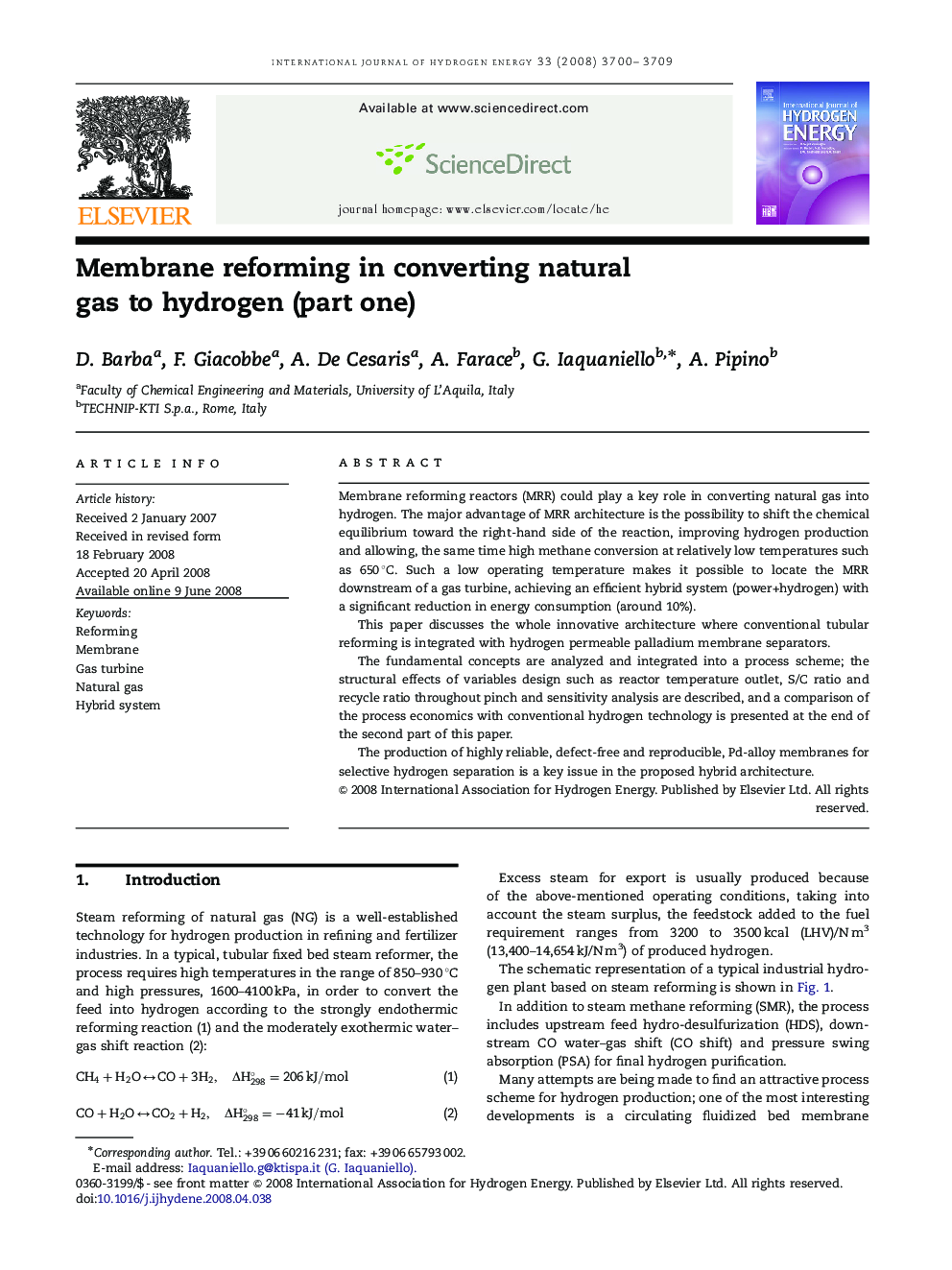| Article ID | Journal | Published Year | Pages | File Type |
|---|---|---|---|---|
| 1283658 | International Journal of Hydrogen Energy | 2008 | 10 Pages |
Membrane reforming reactors (MRR) could play a key role in converting natural gas into hydrogen. The major advantage of MRR architecture is the possibility to shift the chemical equilibrium toward the right-hand side of the reaction, improving hydrogen production and allowing, the same time high methane conversion at relatively low temperatures such as 650 °C. Such a low operating temperature makes it possible to locate the MRR downstream of a gas turbine, achieving an efficient hybrid system (power+hydrogen) with a significant reduction in energy consumption (around 10%).This paper discusses the whole innovative architecture where conventional tubular reforming is integrated with hydrogen permeable palladium membrane separators.The fundamental concepts are analyzed and integrated into a process scheme; the structural effects of variables design such as reactor temperature outlet, S/C ratio and recycle ratio throughout pinch and sensitivity analysis are described, and a comparison of the process economics with conventional hydrogen technology is presented at the end of the second part of this paper.The production of highly reliable, defect-free and reproducible, Pd-alloy membranes for selective hydrogen separation is a key issue in the proposed hybrid architecture.
